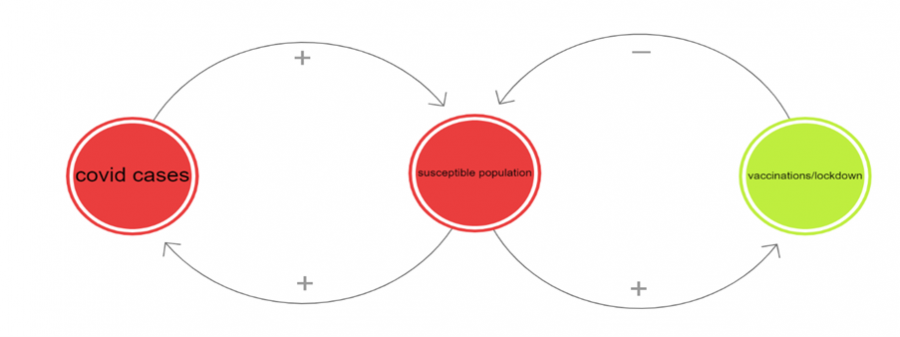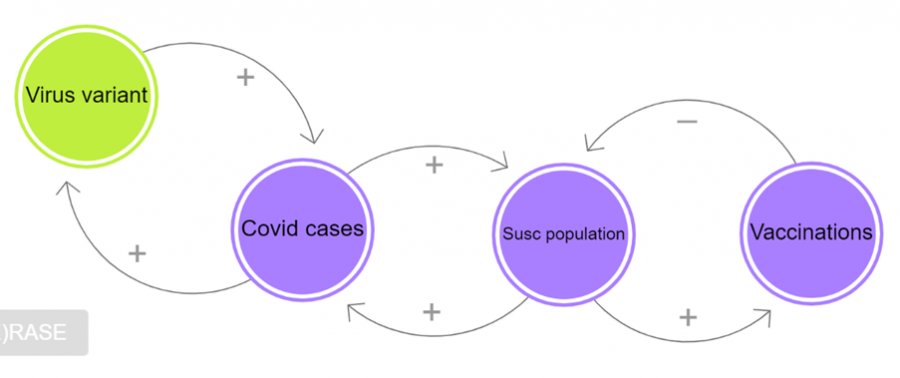The COVID-19 pandemic has brought the complexity and interconnectedness of our world, to the fore. The individual country responses to the virus have unleashed a set of consequences that are difficult to comprehend.
What if there is a branch of thinking and a set of mental models that could help us better understand the interconnectedness and the implications of solutions that address the problem?
Enter systems thinking.
This post explains :
- Concepts of systems thinking
- Key takeaways for corporates and business leaders to navigate better the complex environment they operate in
COVID-19 pandemic is a great example to understand interconnectedness and Systems thinking.
What is systems thinking: The traditional approach to solving a problem is to break it down into smaller components, analyse cause and effect and arrive at a solution. System thinking has a different approach:
- Identify the various parts of the system that the problem is part of
- Understand the relationship and interconnectedness between the parts
- Only then does one arrive at a solution leveraging the understanding of the system
Basic concepts of systems thinking:
Causal loop diagram (CLD): A CLD maps the various parts of the system and then plots the causal relationship between them. A CLD can be either a (a) Reinforcing loop or a (b) Balancing loop.
Reinforcing Loop Change in one direction is compounded by more change.

Smoking leads to nicotine dependency which leads to more smoking which in turn leads to a further increase in dependency.
Balancing Loop change in one direction is countered by a change in the other direction.

Hunger and food consumed. Hunger leads to food consumption which typically reduces the amount of hunger.
Systems thinking Archetypes(Patterns): Archetypes help recognize behaviour patterns in systems. There are different systems thinking frameworks. We will discuss the archetype of “Fixes that fail”.
Fixes that fail – Where a fix effective in the short-term creates side effects for the long-term behaviour of the system and may result in the need of even more fixes.

A common example of this can be found in manufacturing companies. A dissatisfied customer leads to orders being expedited which reduces the dissatisfaction.
In the long run this eventually leads to production line disruptions which cause missed delivery dates and compounds the number of dissatisfied customers(see CLD below).

Application of systems thinking to the current COVID situation: As the virus spread across the world, there was lack of a concerted effort by governments to tackle the virus.
A scramble to acquire vaccines ensued, leading to an inequitable distribution of supplies.
Countries implemented various degrees of lock down measures. A simplified COVID CLD at a country level, looks like this:

Explanation for CLD above :
As the COVID cases increased, the susceptible population increased resulting in increase in more covid cases. This is a reinforcing loop(left of the diagram).
To counter this, vaccinations were procured and lockdown measures were introduced, which in turn balanced/reduced the susceptible population. This is a Balancing loop(right of the diagram).
Eventually this solution would have led to the chain of transmission being broken and herd immunity achieved.
Sounded like a good plan. However, there was a new loop at play.
The more the virus spread, the chances of a variant/mutation increased. For example, the delta variant was way more infectious than the original strain and caused a rapid increase in the number of cases in the country in which it first appeared.
The reinforcing loop is as below:

What implication did this hold for the rest of the world? As the world tried to look at individualized country specific solutions ignoring the interconnectedness of the “system “that is the world , the variant eventually found its way to other countries
The variant from another country causes an acceleration in the covid cases and overwhelmed counter responses like vaccination and lock down measures.
The modified CLD, with the addition of the reinforcing loop for the variants that enter from another country, helps explain better the current issues faced in fighting the virus:

Application of the Fixes that fail archetype : When we apply the archetype of “fixes that fail”, the effect of the lack of a concerted effort to tackle the virus becomes even more clearer:

Explanation for CLD above: Covid (the problem) was treated by countries with a scramble for vaccines(the fix).This led to the rapid spread of the virus especially in populous nations without access to the required supply of vaccines, causing new variants to emerge(unintended consequence) and spreading to other countries.
Conclusion: No man(or woman) is an island. We live in an increasingly interconnected world and COVID has re-emphasized this. A concerted effort to tackle the virus could perhaps have helped combat it better.
Systems thinking is a tool that helps understand the world using a different lens and come up with more concerted solutions that help find solutions in a increasingly complex and interconnected world.
The contributor for this blog is Shiva Vilayanur, a senior finance leader based out of Singapore. He can be reached via LinkedIn at Shiva Vilayanur.
